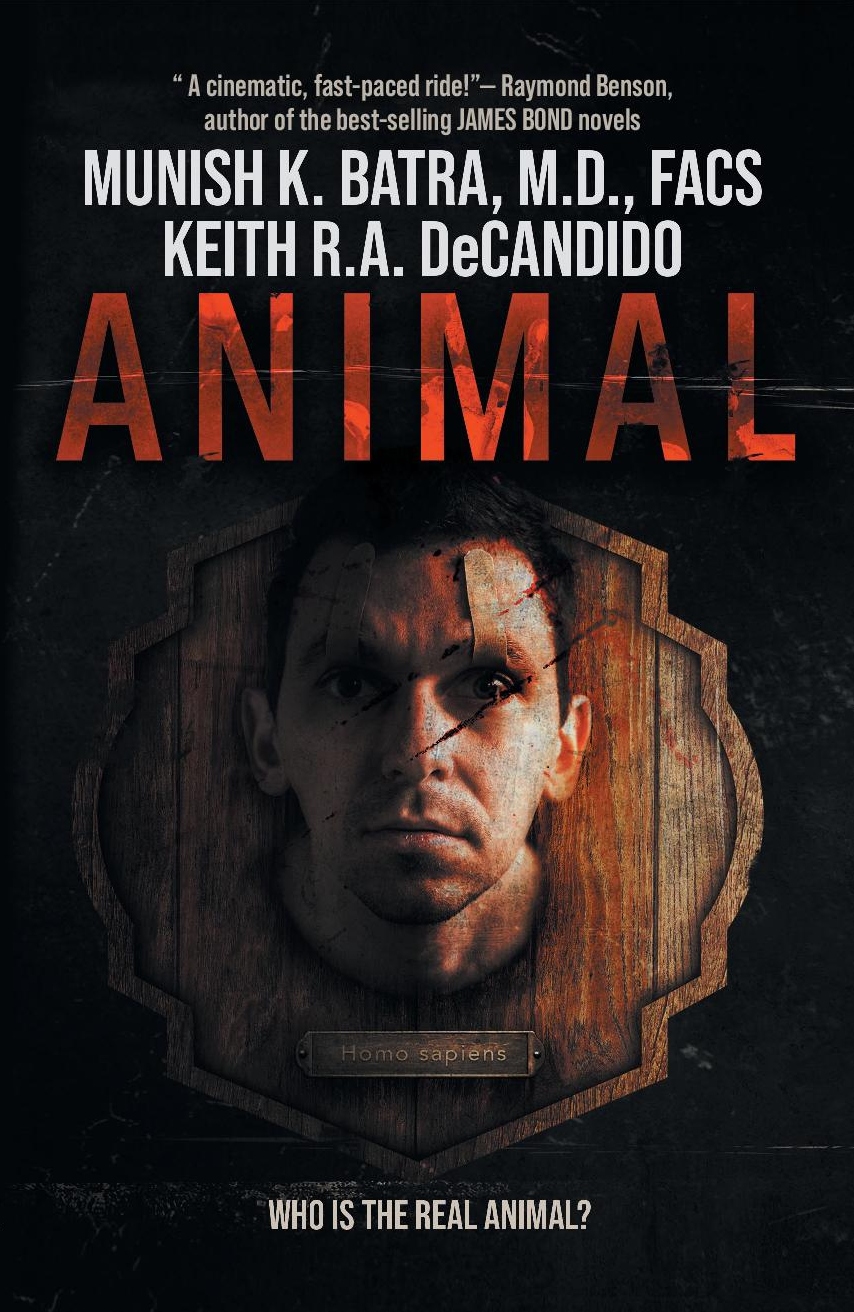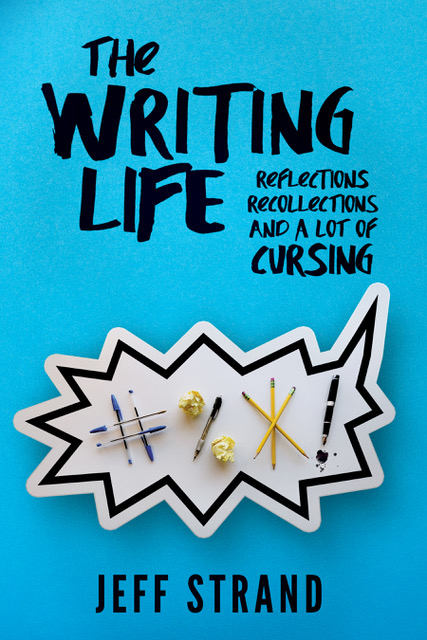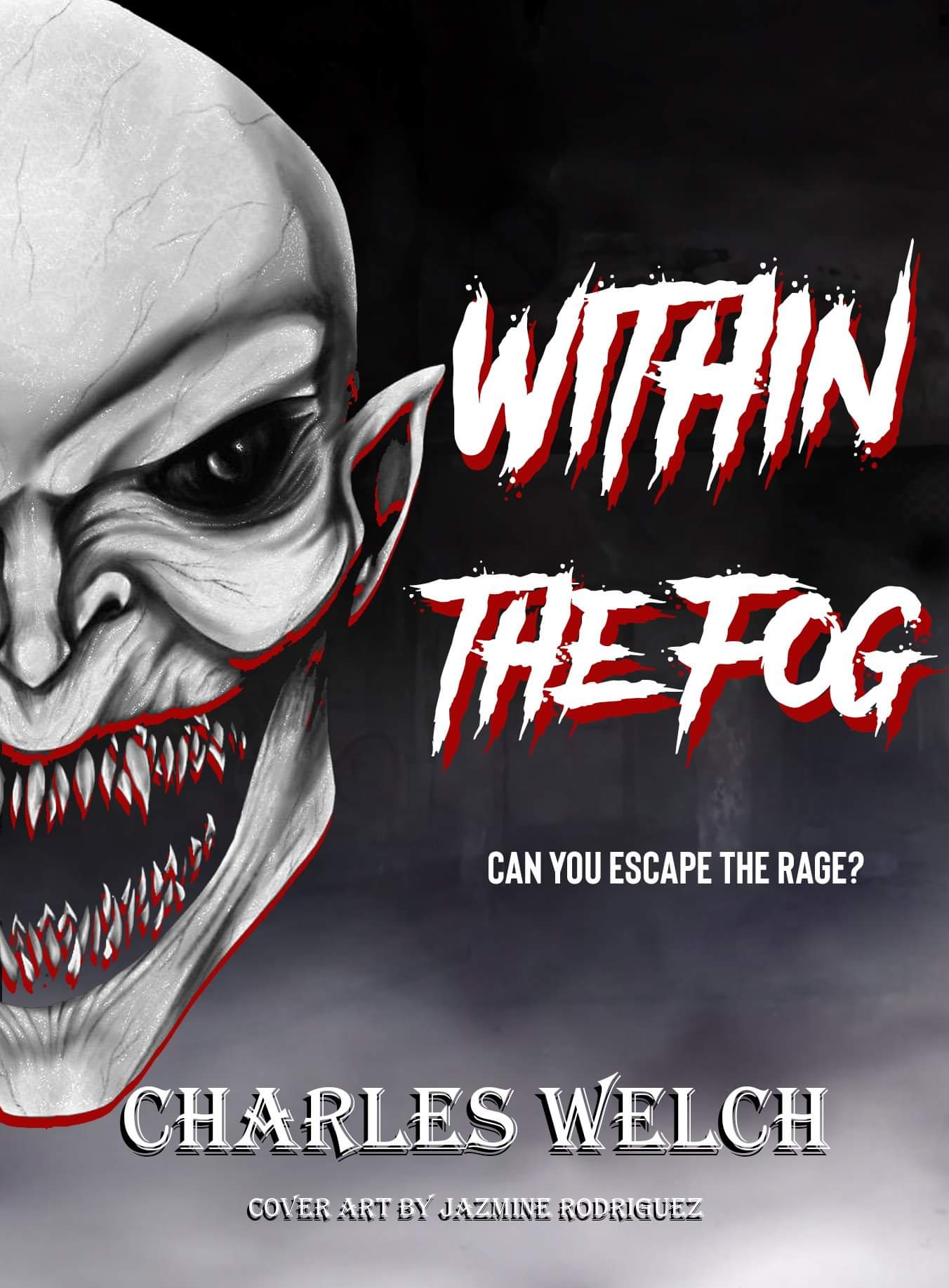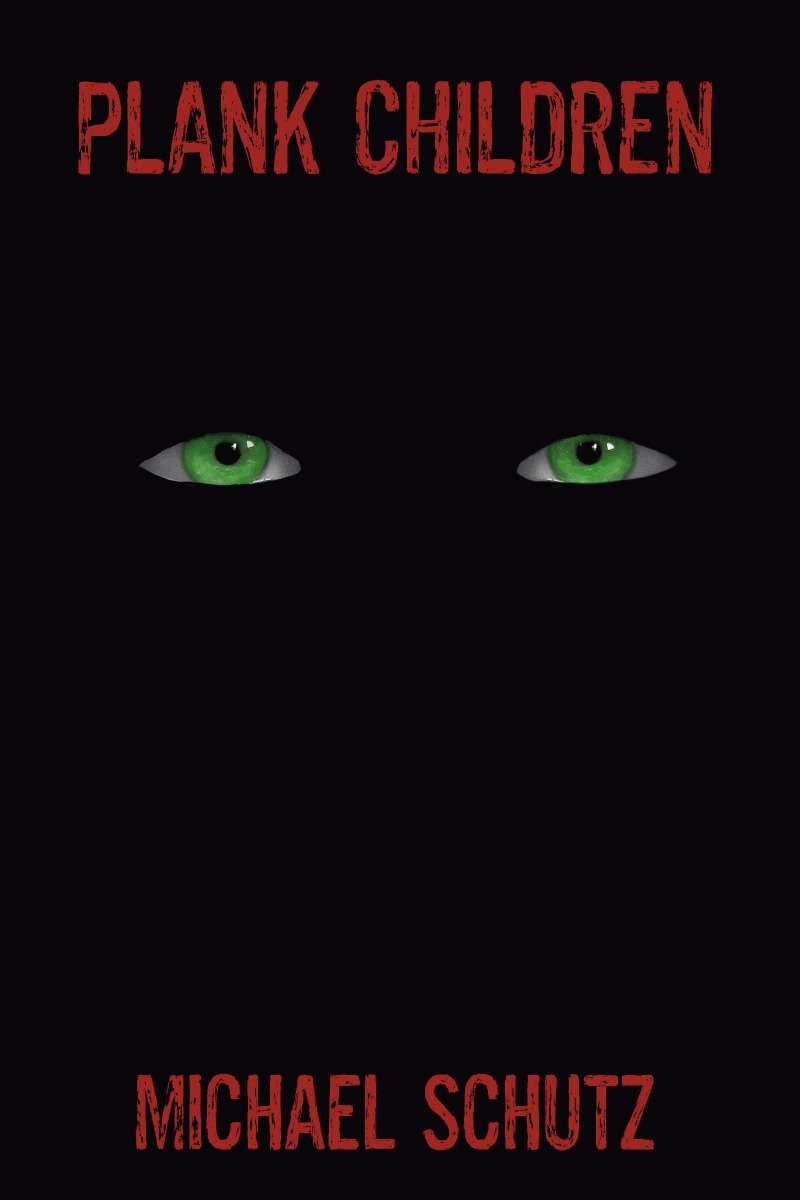This week on The Scariest Part, I’m delighted to host my good friend Keith R.A. DeCandido, whom I’ve had the pleasure of knowing for some years now. His latest novel, co-written with Dr. Munish K. Batra, is Animal. A portion of the novel’s proceeds will go to the San Diego Humane Society, as well as a number of other animal funds and sanctuaries. Here is the publisher’s description:
Renowned surgeon and humanitarian Dr. Munish K. Batra and international best-selling author Keith R.A. DeCandido have worked together to bring you Animal, a pulse-pounding, thought-provoking thriller that will leave you questioning whether noble intentions justify horrific acts.
Interpol Agent An Chang has been chasing a masked serial killer for more than twenty years, a killer who targets those who harm innocent animals. When the serial killer strikes again — two people dead near a meatpacking plant by a culprit wearing a cow mask and soon after the CEO of a water park is brutally killed by someone wearing an orca mask — Chang heads to California to finally catch his vigilante killer.
What Chang shockingly discovers in California sends him on a wild-goose chase from the streets of Shanghai to around the globe. What Chang is beginning to understand is that the killer’s motives and history are far deeper than anyone realizes. So, who is the real animal?
And now, let’s hear what the scariest part was for Keith R.A. DeCandido:
I don’t know if Chapter 15 of Animal is the scariest part of the thriller that I cowrote with Dr. Munish K. Batra, but it was certainly the hardest part for me to write. And that was against some pretty stiff competition…
Animal is about a serial killer who specifically targets people who harm animals. Dr. Batra has spent a great deal of time travelling the world providing humanitarian aid to Third World countries as well as nations that have suffered natural disasters, and in those travels, he’s observed a lot of instances of cruelty to animals.
An incident that particularly stuck with him was seeing dog and cat carcasses being hung in shops in China, intended for food. As someone with a dog as part of his household, Dr. Batra found this appalling — as did I when he and I discussed it. The backstory of our killer is that he was living in Shanghai when his dog was taken and killed to be made into food, along with many other dogs.
When it came time to write that part of our killer’s backstory, I was dreading it. I wrote it from the POV of the child, who was five years old at the time. I had to draw on my experiences dealing with five-year-olds (I teach karate to children, including a lot of four, five, and six-year-olds), as well as my memories of having a Golden Retriever, Scooter (who unfortunately died at the ripe old age of fourteen in 2015).
One of the scariest aspects of growing up is losing your innocence. A child is often lucky enough to see the world as uncomplicated, rarely having the need to make hard choices about life—or even easy ones, truth be told. Particularly children who are fortunate enough to live in stable households, they’re able to live their lives without worry or cares.
So when tragedy strikes, it can be devastating. In this case, we have a kid whose father (a diplomat) is away from home a lot, and his mother is emotionally distant. He loves his older sister, but she can’t spend every moment with him.
Their dog Nandita, though, is another story. She loves the boy unreservedly, and is always there to play with him and snuggle him and run with him and lick him and love him. There is no love on this Earth more devoted and all-encompassing than that of a dog — especially a Golden Retriever.
Which means that losing Nandita is the worst thing that can possibly happen to him. A five-year-old can barely process the notion of loss as it is. To make the loss be of the thing in the five-year-old’s life that brings him the most joy, the most delightful, wonderful, unconditional love is simply devastating.
And holy crap, was it devastating to write.
I’ve never been hugely affected by gory horror or psychological horror. I mean, I appreciate it and enjoy it and love it when it’s done well, but it rarely affects me on a visceral level. But the horror of loss for a small child is something that always gets me, because that level of betrayal, of fear, of devastation is so much greater in someone who hasn’t experienced enough of the world to be mature and/or cynical about it. Which makes it that much nastier.
The worst nightmare I ever had as a kid was when I was around ten or eleven. At that age, I had a tiger puppet that I wore on my hand constantly. Daniel Striped Tiger (named after a character on Mister Rogers’ Neighborhood) only came off my hand when I was eating or bathing. And then one night I had a nightmare that I was walking alongside a set of train tracks near our house that was about thirty feet below the sidewalk. Somehow, even though there was a fence to prevent it, Daniel had come off my hand and fallen down onto the tracks where I would never ever see him again. I could see him down on the tracks, but there was no way to get him back.
I woke up screaming, and then I stopped wearing Daniel on my hand all the time. (Mind you, I still have that puppet, sitting on one of my bookshelves…)
When I wrote Chapter 15 of Animal, I tried to re-create that feeling I had when I woke up from that nightmare.
Whether or not it worked I leave to y’all to decide if and when you read Animal.
Animal: Amazon / Barnes & Noble / Powells / Bookshop / Animal website
Keith R.A. DeCandido: Website / Twitter
Keith R.A. DeCandido is the author of more than fifty novels, more than seventy-five short stories, a mess of comic books, and more nonfiction than he’s willing to try to count. Recent and upcoming titles (besides Animal) include the Alien novel Isolation, the fantasy/police procedurals Mermaid Precinct and Phoenix Precinct, the urban fantasies A Furnace Sealed and Feat of Clay, the military science fiction novel To Hell and Regroup (written with David Sherman), the graphic novel Icarus (with Gregory A. Wilson), pop-culture commentary for the award-winning web site Tor.com, and short stories in the anthologies Bad Ass Moms, Pangaea Book 3: Redemption, and Horns and Halos. He’s also working on more projects in collaboration with Dr. Munish K. Batra. In addition, Keith is a third-degree black belt in karate (which he also teaches), a freelance editor for clients both personal and corporate, a musician (currently percussionist for the parody band Boogie Knights), and possibly some other stuff he can’t recall due to the lack of sleep.





